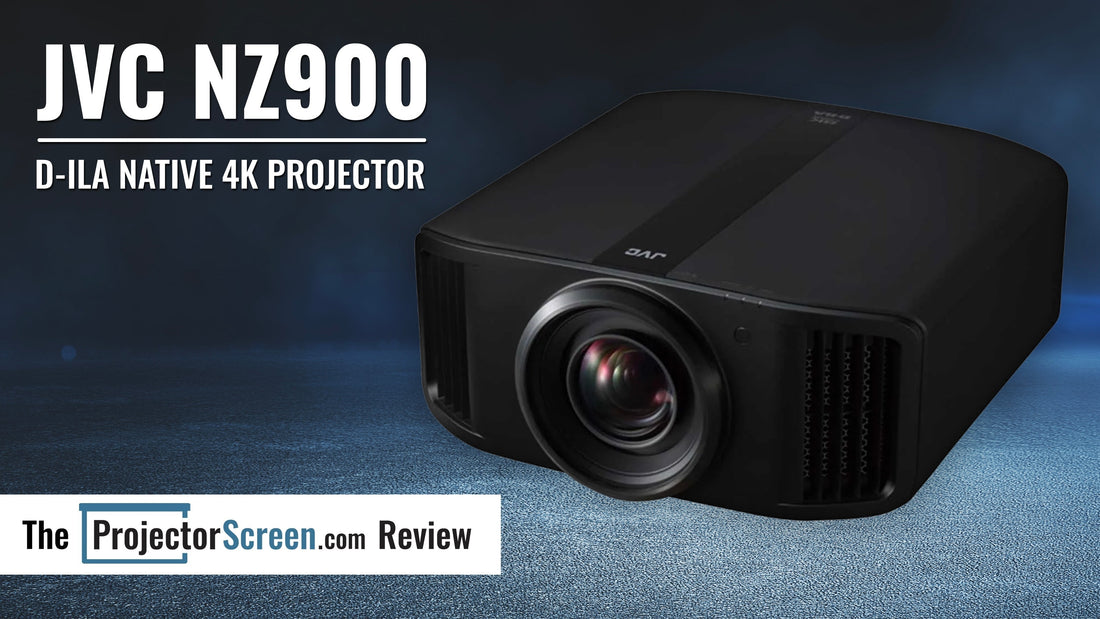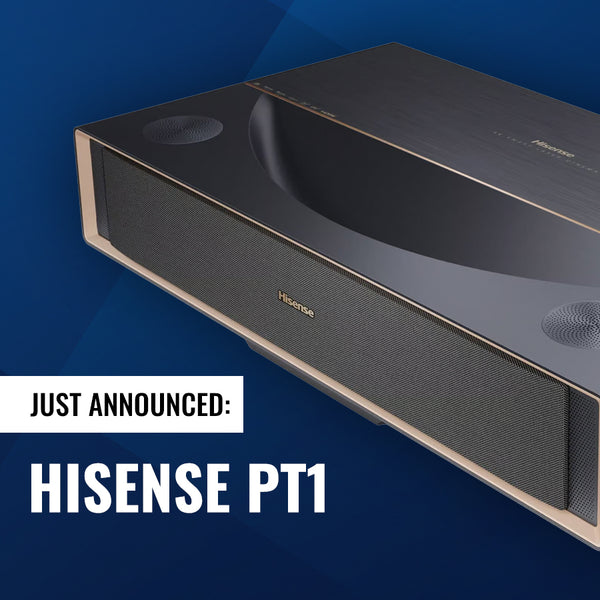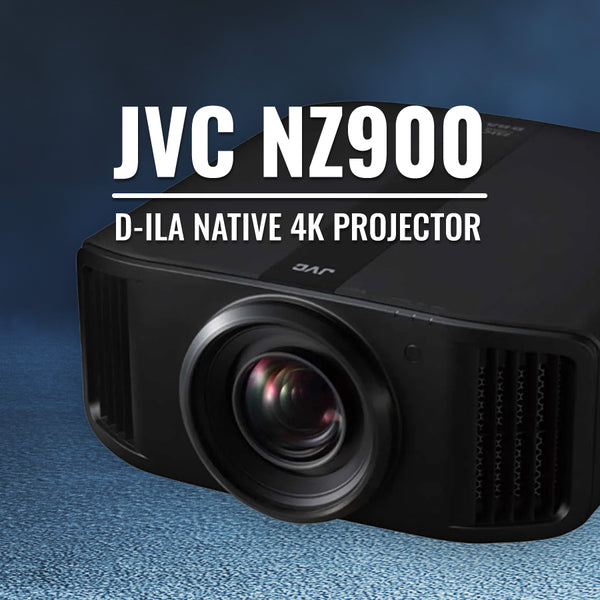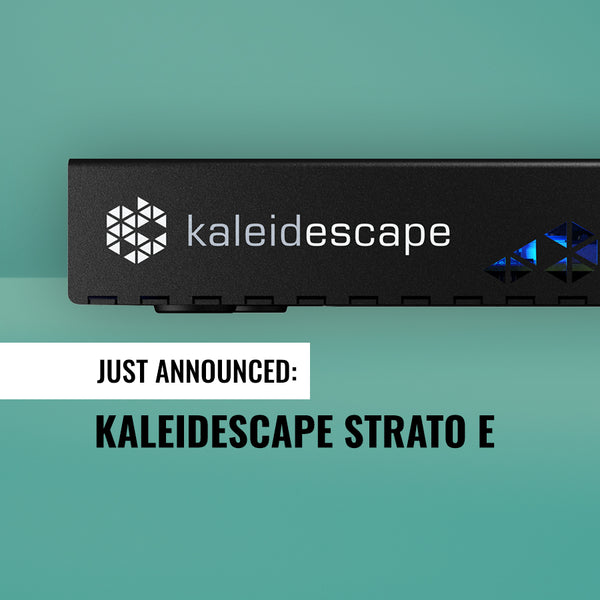JVC NZ900 Laser D-ILA Native 4K Projector Review

- Best in class native contrast and black level performance
- 8K e-ShiftX Gen 2
- 100mm Lens offers excellent sharpness and clarity
- Up to 3300 Lumens
- Up to nearly full P3 color gamut coverage
- 4K 120Hz gaming with good responsiveness
- Quiet fan operation through most of the laser power range
- Nice backlit remote
- Built in dynamic tone mapping for better HDR performance
- Light reducing color filter required for higher color gamut coverage
- OOTB color could be better, calibration recommended
- Each step up in JVC’s line-up increases lumens in small steps
- Frame Adapt Tone Mapping disabled in low latency gaming mode

About The JVC NZ900
JVC’s $29,999 MSRP NZ900 laser projector is a single laser (BLU-Escent Laser diode Gen 3 0.69-inch Native 4K D-ILA Device (4096 x 2160) x3) D-ILA projector rated for 20,000+ hours of laser life. JVC claims 3300 lumens of brightness with a native contrast ratio of 150,000:1 and can meet those claims in the certain profiles with specific settings and installations.
Your installation setup and aperture setting will have an impact on the native contrast. I measured a range from a worst case scenario using the lens at the widest position and the aperture fully open of around 30,000:1. Closing the aperture down and moving to the telephoto end results in a high of nearly 160,000:1. As always if you are wanting to optimize the contrast of your projector, proper planning of the room and installation will be most important to get the most out of your projector. For this review the NZ900 was measured directly off the lens to remove room conditions from the equation. Measuring off the screen after calibration for this particular setup achieved over 50,000:1. When using the High Bright profile lumens measured just over the claimed 3300 lumens.
The NZ900 also has JVC’s new Deep Black Tone Control that can improve dark scene depth and quality without loss of detail.


While long throw projectors like the JVC NZ900 don’t typically support Dolby Vision, it does have support for HLG, HDR10 and HDR10+. Not supporting Dolby Vision really shouldn’t be a concern for most. JVC has frame by frame adaptive dynamic tone mapping (which now supports DML or Display Mastering Luminance) that works well to show plenty of highlight details, and doesn’t over darken dark scenes leaving shadow detail intact.

The high-end DLA-NZ900 is equipped with an 18-element, 16-group all-glass lens featuring a full aluminium lens barrel. To project high resolution 8K images to every corner of the screen, the projector incorporates five ED lenses calibrated for differences in the R/G/B refractive index to reduce chromatic aberration and colour fringing when lens shift kicks in to deliver precise reproduction of 4K- or 8K-resolution projection.

The motorized lens has a throw ratio of 1.35-2.75:1 for screen sizes of 60-300”. There is a horizontal shift of +/-43% and vertical of +/-100%. The motorized lens also has saveable profiles and compatibility for scope screen and anamorphic lenses.


JVC projectors featuring Frame Adapt HDR and Theater Optimizer to help improve tone mapping for HDR/HDR10+ content at optimum brightness and darkness in each scene as the creator intended.

There are many different video modes available on the JVC NZ900. Ranging from Filmmaker mode for those who appreciate a more accurate image with minimal processing and no soap opera effect inducing motion controls on by default, to Vivid for those that want a higher brightness and saturation of colors.


One of the features available on the higher tier JVC projectors that is unavailable on the lower tier models is Clear Motion Drive. This is JVC’s name for their motion processing and interpolation settings to increase smoothness of motion and frame persistence.

Another benefit for JVC projectors is the included support for JVC autocal software with compatible separately sold calibration meters. This will allow hobbyist and professional calibrators to potentially improve out of the box performance, and maintain the image quality of their projector over time.

JVC also works with Control 4 automation systems when connected to your network through the ethernet port.

The chassis design of the NZ900 will be familiar if you are upgrading from the previous generation. Air enters the rear and vents out of the front on both sides of the lens. There are four adjustable feet on the bottom to level out the projector if shelf mounting, and those feet can be removed to access the mounting holes.

The NZ900 has a color filter that when engaged will expand the color coverage to cover most of the P3 Color Gamut range used in HDR content. Or the color filter can be disengaged to reclaim around 30% of the light output performance, while still having around 90%uv of P3 coverage.

Coming in at nearly 56 pounds, 9.2"H x 19.8W" x 20.8"D the NZ900 is pretty hefty and would recommend most to have two people during the install if mounting to the ceiling or overhead.


Connectivity

On the back you will find the port for the option 3D emitter kit, 2 HDMI 2.1 (48Gbps) 8K/60Hz 4K/120Hz capable ports, RS-232, USB port for firmware updating and backup of your settings, an ethernet port, 12v trigger port and then the manual controls and a rear remote sensor.

The included backlit remote feels nicely made and has an easy to find “light” button on the bottom to make menu navigation easy in a dark room.
There is an Installation Mode tab in the settings that allows users to manage settings related to the installation. As shown in the graphic below, eight settings for Lens Control, Pixel Adjustment, Mask, Anamorphic on or off, Screen Setting, Installation Style, Keystone, and Aspect can be adjusted. Up to ten different mode settings can be stored in memory and renamed as you wish. Installation modes stored in memory are quick to access and switch between as needed.

JVC has an extensive range of adjustment of the Red, Green, and Blue convergence across multiple sectors of the screen. With proper alignment and focus, both of which are adjusted digitally, the sharpness and detail of the 100mm lens on the NZ900 is excellent.

You can also easily save your settings and profiles to a USB for safekeeping and back up if needed.

Image Quality
I tested the NZ900 on a 110” StudioTek 130 G4 screen in a dark studio room, which is an environment JVC projectors really excel in. With a black floor of around 0.002 nits dark scenes are convincingly dark with excellent contrast.
Starting in SDR with The Illusionist the NZ900 did very well in retaining color saturation of the red robe in the scene pictured below. This particular shot is difficult for many displays to maintain red saturation in the robe with how dark it is while not raising the shadows to be too bright and washed out. Do note this is also very difficult to photograph well from the high level of contrast in the scene exceeding the capability of the camera sensor to capture the full dynamic range.

Skin tones were represented well throughout the movie with no visible tinting or saturation issues. The 100mm lens is very sharp and detailed even with this 1080P Blu-Ray. No upscaling artifacts or ringing was noticeable at any point in any of my testing. Motion is also top notch and customizable to your liking with the Clear Motion Drive settings for various levels of motion interpolation and smoothing. 24 fps content plays correctly without any added hiccups or sutters.
I then switched to Star Wars Rogue One 4K Blu Ray with HDR, and had JVC’s excellent Frame Adapt tone mapping turned on. At the end of the movie, the explosion on the planet seen from space is graded to around 1400 nits. The brightest areas of the explosion were shown with excellent detail while still having great HDR impact from the brightness (measured approximately 230 nits after calibration in HDR). The dark area of space on the right side of the image and the black bars maintained a very low luminance and visually were convincingly black.

The following scene in the ship with the fight against Vader has a lot of bright highlights from sparks and the red lasers and light saber. There are less dark objects in this shot but the NZ900 still does well keeping Vader’s suit detailed and not being fully washed out. As well as the character seen on the left of the image you can still make out the smooth transition from black on his left side to gray on his right from the light of the sparks brightening up the side of his helmet. The lasers and the red lightsaber also hold on to the red glow around the edges of the light as they should.

During the opening performance of The Greatest Showman (also 4K Blu Ray in HDR) the scene starts with Hugh Jackman’s character in the shadows behind the seating for the show and has bright lights peaking through the cracks. His outline mostly is black with light just around the edges of his silhouette and the NZ900 continues to perform admirably with excellent contrast. As he makes his way to the stage under the spotlights and the overall scene brightness increases the NZ900 handles this without any loss of detail. Even as the flames are fired as shown below, the shades of color and lines of detail throughout the flows is excellent with nothing that would appear clipped. JVC’s Frame Adapt tone mapping continues to show its strengths here. The bright red of his jacket is also very well saturated and impressively vibrant.

The superior contrast and tone mapping abilities of the JVC NZ900 are the main reasons you buy this projector. The following examples will continue to focus on these areas as it is what separates JVC from their competition.
In Fantastic Beasts Crimes Of Grindelwald the fire dragon scene remains one of the brightest and highest graded scenes in all HDR content. The flames stay around 3000-4000 nits and cover a high area of the screen, and essentially all displays need tone mapping for this scene even in 2025.
The blue and red/orange flames are presented exceptionally well on the NZ900 as the Frame Adapt tone mapping continues to prioritise retaining detail in the image. No where in the scene does it appear washed or without detail.


In Mad Max Fury Road, which also is a real content stress test for tone mapping and color ability in the highlights during the storm scene, the NZ900 continues to impress. The red, orange, and yellow highlights in the explosions are very well saturated and detailed in a way most other projectors simply can’t reproduce. Even the shadow details in the clouds remain uncrushed even next to the bright explosion highlights. The NZ900 presents a real spectacle of HDR performance here.

Upon entering the storm there are a couple of frames where lightning strikes and causes a reflection of the face and goggles as seen in this image. Many projectors with less performing tone mapping would clip the face detail in the reflection and just show a white blob here while the NZ900 does a great job showing the detail that should be seen.

Image Sharpness and Precision

Sharpness and detail is top notch with the NZ900. It is a native 4k (4096x2160) projector with 4 way pixel shifting up to 8K. The all glass 100mm lens is razor sharp, with edge to edge sharpness in the corners.

The processing also does a great job with not causing any noticeable artifacts when upscaling lower resolution content, and the 4K to 8K shifting will impress many. When turning up the adjustable processing “Enhance” feature (in the MPC/e-shift menu) too far you may see some ringing and other over-sharpening effects. By default the setting of 5 is too high for many and looks over-processed, but reducing it to 1-2 can be pleasing to many without visible issues. I used the “graphic mode Standard” in that menu as well with 8K e-shift enabled during my testing. I left all of the noise reduction settings to 0 so as to not soften the image or lose any detail.


Colorimetry & Calibration
Measurements and calibration were done using Colorimetry Research CR-250 spectroradiometer and CR-100 colorimeter, Murideo 6G pattern generator, and Calman Ultimate software.
As mentioned at the beginning of this review, the measured native contrast of the NZ900 is exceptional. This is especially thanks to the adjustable aperture that can be lowered when you have brightness headroom to increase the contrast. However there is a lot more to image contrast than just the full on full off native contrast. JVC also has a laser dimming setting called Dynamic CTRL which can improve contrast in darker scenes even more, then ramping the brightness back up in higher brightness scenes. I liked the “balanced” setting best and it operated quickly on scene changes without any noticeable brightness pumping like effects.

Once the average scene brightness exceeds around 10% ADL the mixed scene contrast is more comparable to most other high end home theater projectors. This is heavily dependent on room conditions and any possible reflective surfaces that will bounce back on to the screen.
Using this PCA contrast test (on the Spears & Munsil disc) shows how dark the black area can remain even with a white ring of varying sizes.


Out of the box I like to use the “Natural” picture preset for SDR content, and with the color temp at 6500K and gamma at 2.4 it measured closer to 2.3 gamma and the white balance was a little too warm. If you use the 7500K color temp setting the image is then too cool compared to reference D65. If not having it calibrated I would say they are both reasonably close, in different directions, and pick the one you prefer. I would highly recommend getting a calibration though, as the post calibration results are fantastic. I measured the grayscale with an average dE2000 error of only 0.5, and with a spot on reference 2.4 gamma.

Color comes in after calibration with an equally impressive dE2000 error average of just 0.65.

Then in HDR after calibration the ColorChecker is also fantastic with a dE2000 average of 1.2, and ITP error (used for HDR and typically a dE under 5 ITP is imperceptible) of 3.8 average. This was without the color filter engaged to maintain higher brightness in HDR.

Gaming & 3D
The NZ900 offers improved gaming performance over the lower tier models in the line-up with lowering input lag and including support for 4K 120Hz. However some of the competitors in this range will have even lower input lag and additional features. You can expect 1.5-3.5 frames of input lag depending on the resolution and refresh rate. In most cases this is still responsive enough for most gamers.
Unfortunately when low latency mode is enabled, in HDR the adaptive tone mapping is not available, and neither is Dynamic CTRL laser dimming. I would recommend keeping the gaming to SDR, unless you can get your games to output very close to your HDR brightness level if on a smaller and high gain screen.
The NZ900 does also support 3D content, but will need a separate 3D emitter accessory in order to do so.
Settings
In SDR I would recommend the following settings:
- Picture Mode - Natural
- Color Profile - Auto (BT709)
- Color Temp - 6500k (or 7500K for cooler look)
- Gamma - 2.4
- MPC - 8K e-Shift On
- Graphic Mode - Standard
- Enhance 1 or 2 - NR/BNR/MNR - 0/0/0
- Motion Control - Clear Motion Drive + Motion Enhance Off or to preference
- LD Power - Set SDR brightness to comfortable setting for the room and noise level
- Dynamic Control - I preferred “Balanced” by try each setting to see what you like
- Aperture - At least a few clicks negative or more, will reduce brightness and increase contrast
- Contrast/Brightness/Color/Tint all at default
-
For my setup I reduced Red Gain by -13 and Green Gain by -13 when using 6500K.
(this will be different/wrong for your setup and screen)
For HDR:
- Picture Mode - HDR Frame Adapt HDR 1
- Color Profile - BT2020 (Normal)
- Color Temp - 6500k
- MPC - 8K e-Shift On
- Graphic Mode - Standard
- Enhance 1 or 2 - NR/BNR/MNR - 0/0/0
- Motion Control - Clear Motion Drive + Motion Enhance Off or to preference
- LD Power - 100
- Dynamic Control - I preferred “Balanced” by try each setting to see what you like
- Aperture - -2
Final Conclusions
Image quality is simply fantastic with the JVC NZ900. Black level and contrast is superior to all competitors and color performance is excellent after calibration. JVC’s tone mapping continues to remain unrivaled in most scenes, being able to retain detail in the brightest of highlights and not making the image too dark in dark scenes.
At an MSRP of $29,999 the JVC NZ900 offers a best in class dark room home theater performance for movie watching. It is very well featured with frame by frame dynamic tone mapping in HDR, also supports HDR10+, and while gaming performance isn’t best in class, it's good enough for most. The motorized lens controls and flexibility are great for those with scope screens and wanting to add an anamorphic lens. It's also nice to see 3D support not fully cut out like it has been on competing models (and JVC’s own lower tier options). The calibration controls, features, and options are also a huge addition to really dial the performance in to reach near reference quality results.
The only wish I would want to give the NZ900 a perfect rating is more light output at this price. JVC has relatively small increases in real world brightness for large increases in price to go up their product line. If the NZ900 offered closer to 4,000 lumens it would be a better value proposition when moving up from the also excellent NZ800 which costs $11,000 less than the NZ900. Other than that, there really aren’t many complaints with the NZ900, or the rest of JVC’s overall great lineup of laser D-ILA projectors.









